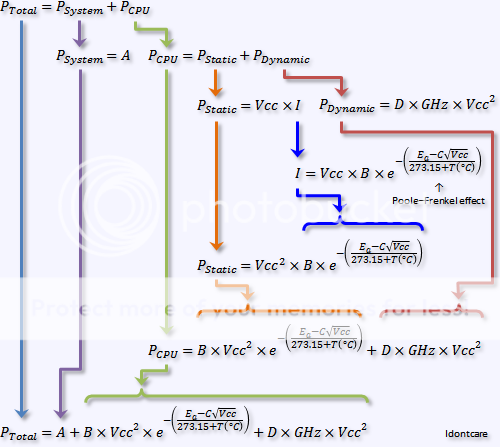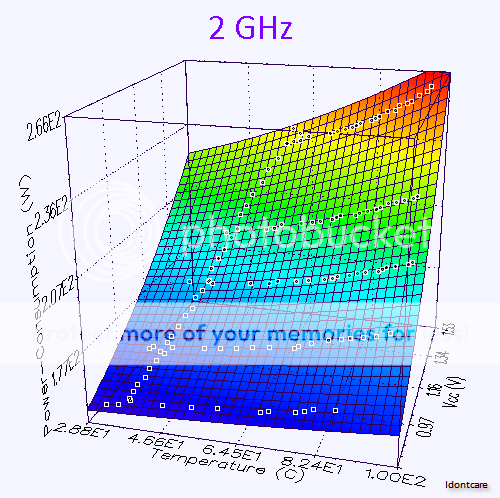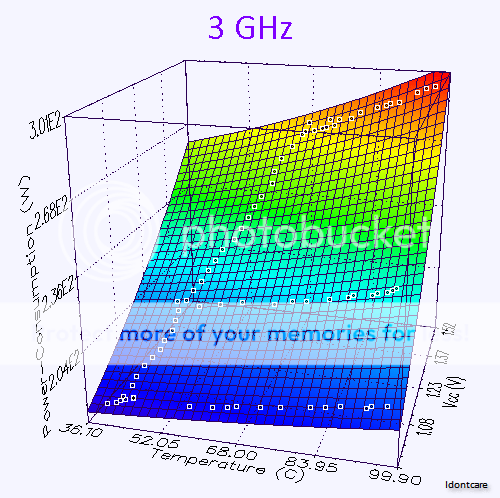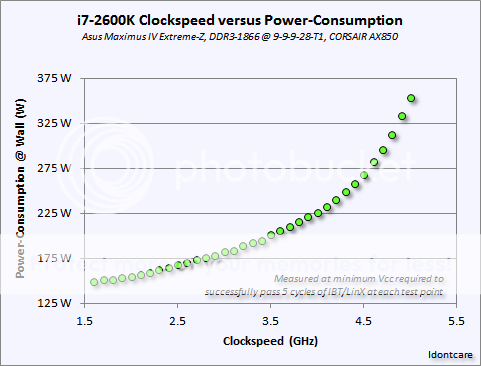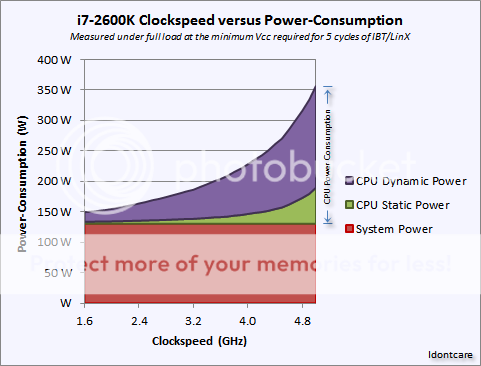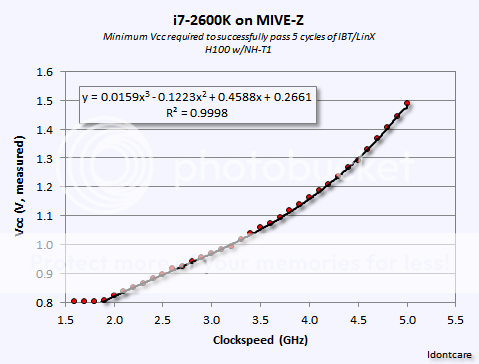Building on a previous thread that was directed more towards power-consumption scaling with CPU clockspeed, of the many things uncovered in that thread the one thing that just never sat right with me, or with many other members, was the impact of the operating temperature on power-consumption itself was never fully, robustly, addressed.
So I went back and re-investigated the matter from top to bottom, and I figured I would share the results with all three of you out there who care to get into this stuff like I do

Just to re-visit the hardware setup here, I've got an ASUS Maximus IV Extreme-Z that has these lovely ProbeIT voltage monitoring connections built right into the motherboard so I can track the CPU's Vcc in realtime with an external voltmeter.
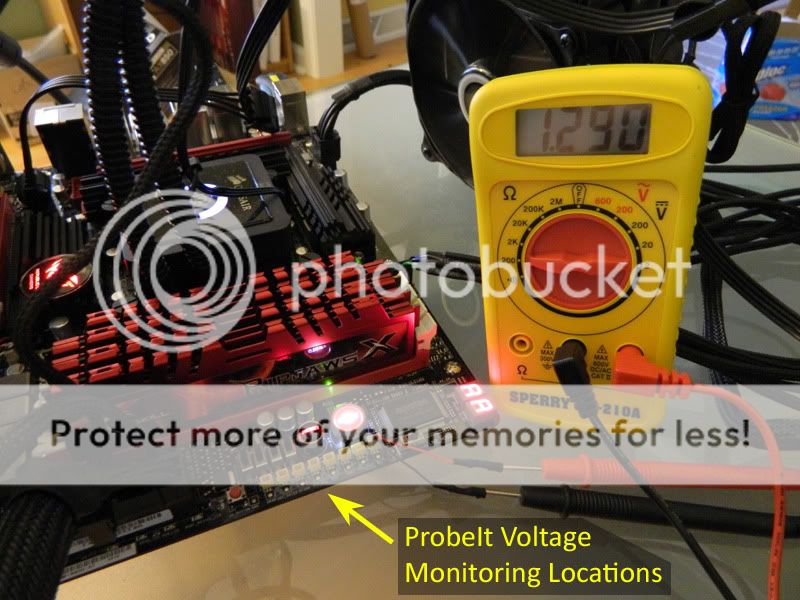
In addition to that "feature", I've got your standard run of the mill Kill-a-Watt power meter along with a generic ambient temperature probe.
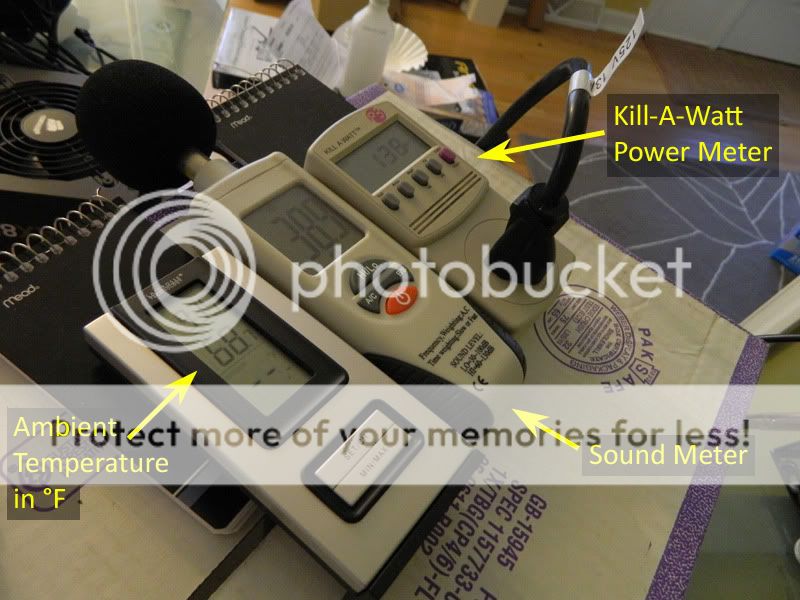
Now for the tests I wanted to run here, looking at the effect of temperature on power-consumption, I needed a way to control the temperature of the CPU without changing the power of the system when doing so (without changing the fan rpm's that were connected to the mobo for example).
To that end, what I did was I connected 4 fans to the motherboard headers (for power-draw continuity purposes) but I set the fans off to the side so they weren't actually being used to cool anything.
Then I setup an external box-fan, the kind you'd buy at Walmart or Home Depot, and used that to blow air across the computer and through the fins of the Noctua NH-D14 heatsink. (which was lapped, along with the CPU, details here if interested)

^ The box-fan (not really a box-fan as you can see, but I forget the technical name for this thing) can be seen in the background there.
What I did to control the CPU temps was I started IBT for a silly long session (300 minutes) with the boxfan close to the NH-D14. Monitored temps with real-temp. Once the temps leveled off, with the computer fully loaded with IBT (4 threads, affinity locked to physical cores) I would physically move the box-fan a small distance away from the computer in increments of roughly 6-12 inches at a time.
Then I'd let the temperatures level off, I'd record the temperature and power-consumption, and move the fan again.
I would repeat this process until the CPU hit is TJmax of 98°C and started throttling.
In cases with low clockspeed and/or low Vcc, where the NH-D14 was actually sufficient to passively cool the CPU at a temperature under the TJmax limit, I would go to the extremes of putting a card-board box over the top of the NH-D14 to force the issue of getting the CPU to heat up:
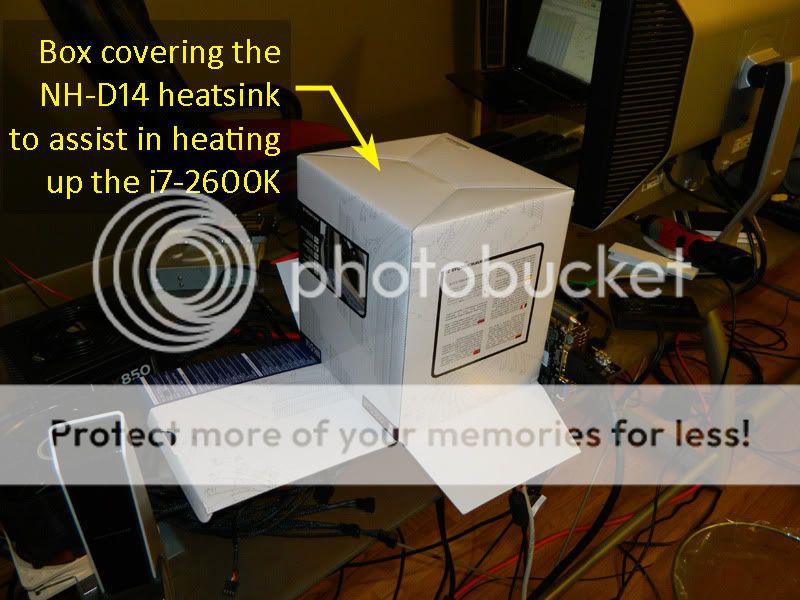
In the case of the 2600K operating at 2GHz and 0.820V, I simply could NOT get it to heat up to 98°C even with the box covering the NH-D14 and swaddling the whole thing with blankets to try and trap the heat (it maxed out around 86°C in that specific test)
(it maxed out around 86°C in that specific test)
And that's pretty much how I went about "acquiring the data".
So I went back and re-investigated the matter from top to bottom, and I figured I would share the results with all three of you out there who care to get into this stuff like I do
Just to re-visit the hardware setup here, I've got an ASUS Maximus IV Extreme-Z that has these lovely ProbeIT voltage monitoring connections built right into the motherboard so I can track the CPU's Vcc in realtime with an external voltmeter.

In addition to that "feature", I've got your standard run of the mill Kill-a-Watt power meter along with a generic ambient temperature probe.

Now for the tests I wanted to run here, looking at the effect of temperature on power-consumption, I needed a way to control the temperature of the CPU without changing the power of the system when doing so (without changing the fan rpm's that were connected to the mobo for example).
To that end, what I did was I connected 4 fans to the motherboard headers (for power-draw continuity purposes) but I set the fans off to the side so they weren't actually being used to cool anything.
Then I setup an external box-fan, the kind you'd buy at Walmart or Home Depot, and used that to blow air across the computer and through the fins of the Noctua NH-D14 heatsink. (which was lapped, along with the CPU, details here if interested)

^ The box-fan (not really a box-fan as you can see, but I forget the technical name for this thing) can be seen in the background there.
What I did to control the CPU temps was I started IBT for a silly long session (300 minutes) with the boxfan close to the NH-D14. Monitored temps with real-temp. Once the temps leveled off, with the computer fully loaded with IBT (4 threads, affinity locked to physical cores) I would physically move the box-fan a small distance away from the computer in increments of roughly 6-12 inches at a time.
Then I'd let the temperatures level off, I'd record the temperature and power-consumption, and move the fan again.
I would repeat this process until the CPU hit is TJmax of 98°C and started throttling.
In cases with low clockspeed and/or low Vcc, where the NH-D14 was actually sufficient to passively cool the CPU at a temperature under the TJmax limit, I would go to the extremes of putting a card-board box over the top of the NH-D14 to force the issue of getting the CPU to heat up:

In the case of the 2600K operating at 2GHz and 0.820V, I simply could NOT get it to heat up to 98°C even with the box covering the NH-D14 and swaddling the whole thing with blankets to try and trap the heat
And that's pretty much how I went about "acquiring the data".




